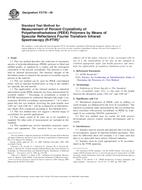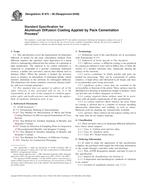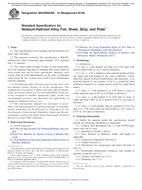1.1 This test method covers the determination of transthickness tensile strength (S
1.2 This test method is intended primarily for use with all advanced ceramic matrix composites with continuous fiber reinforcement: unidirectional (1-D), bidirectional (2-D), woven, and tridirectional (3-D). In addition, this test method also may be used with glass (amorphous) matrix composites with 1-D, 2-D, and 3-D continuous fiber reinforcement. This test method does not address directly discontinuous fiber-reinforced, whisker-reinforced or particulate-reinforced ceramics, although the test methods detailed here may be equally applicable to these composites. It should be noted that 3-D architectures with a high volume fraction of fibers in the “ z” direction may be difficult to test successfully.
1.3 Values are in accordance with the International System of Units (SI) and Practice E380.
1.4 This standard does not purport to address all of the safety concerns, if any, associated with its use. It is the responsibility of the user of this standard to establish appropriate safety and health practices and determine the applicability of regulatory limitations prior to use. Additional recommendations are provided in and Section .
Product Details
- Published:
- 06/10/2000
- Number of Pages:
- 16
- File Size:
- 1 file , 390 KB


